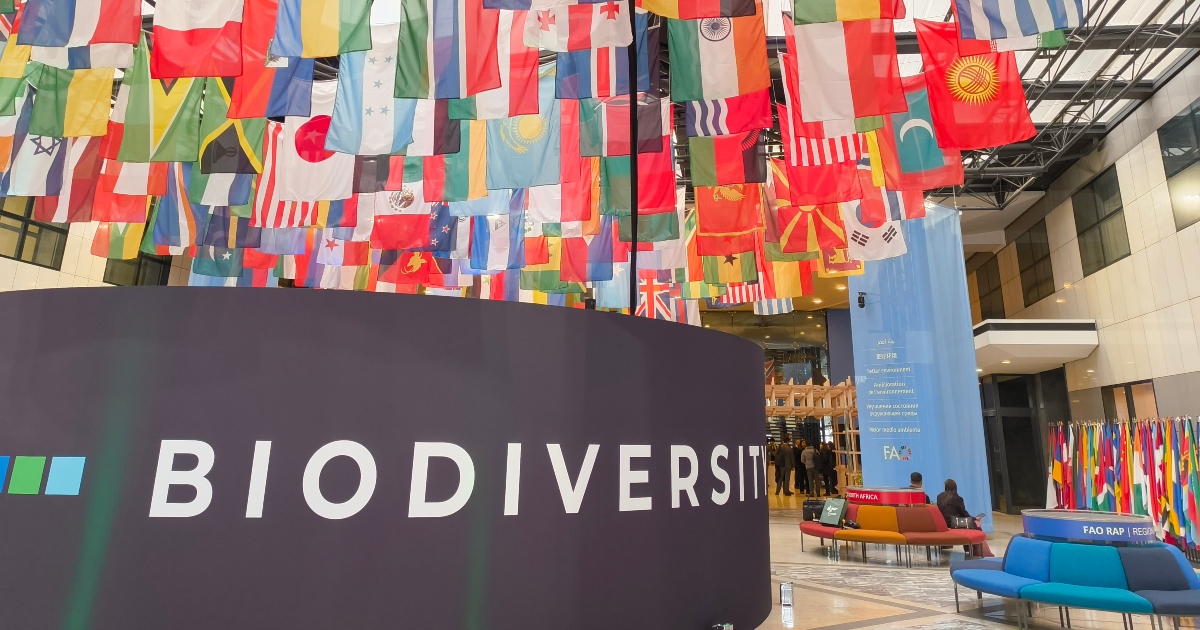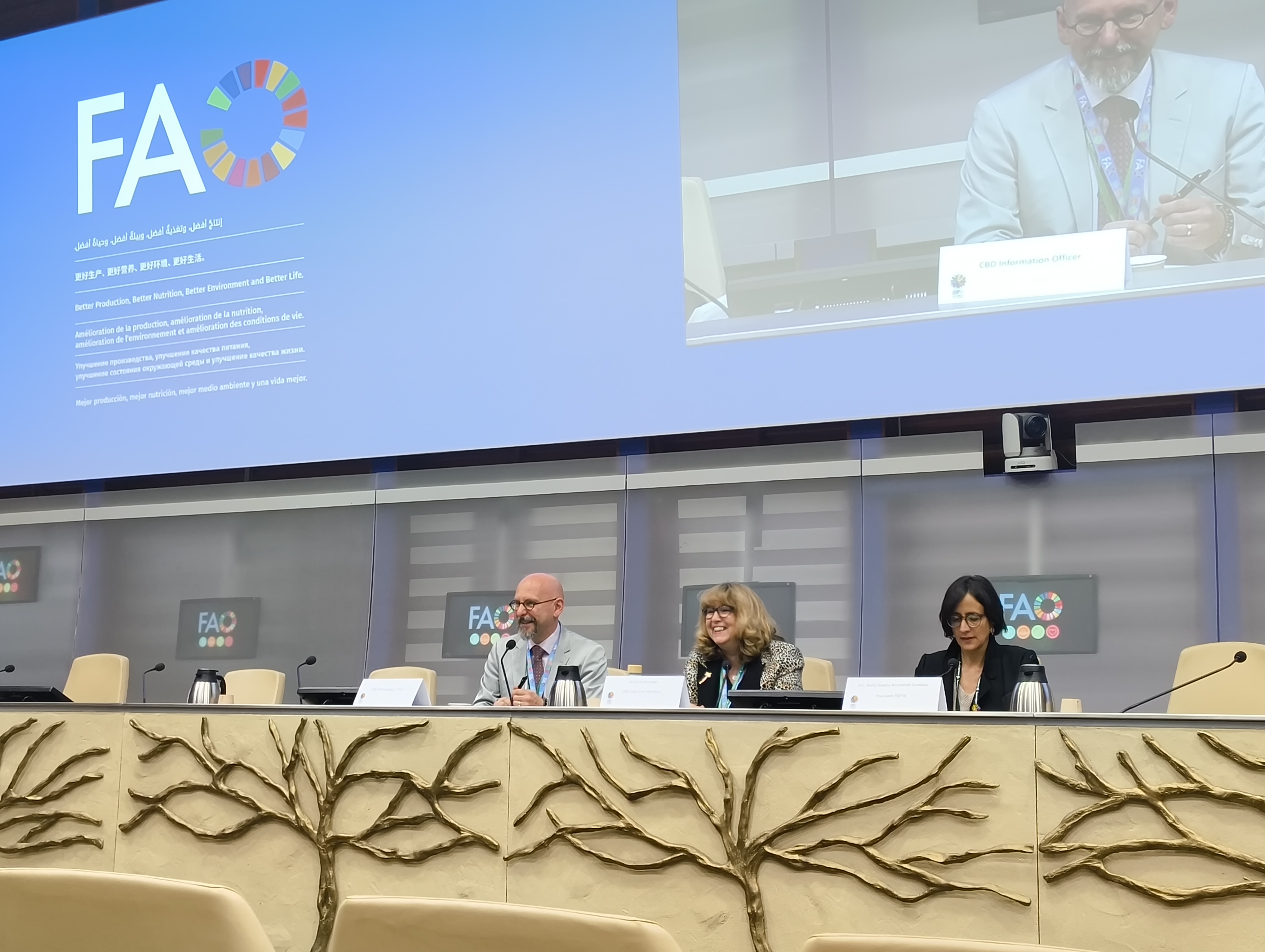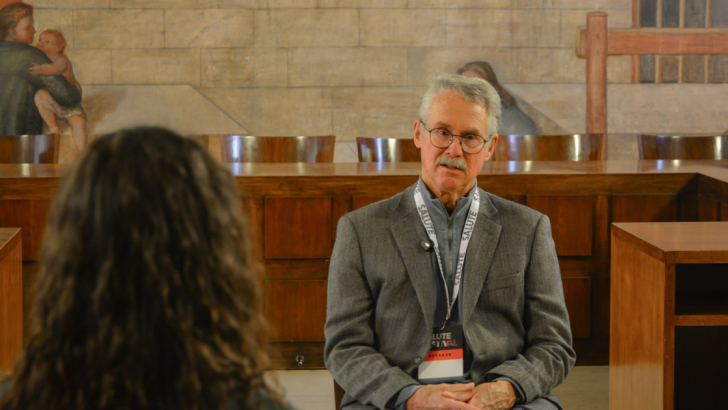COP16, biodiversity negotiations resume in Rome

The FAO Flag Hall in Rome. Photo: Sofia Belardinelli
Today at the FAO headquarters in Rome, the “second half” of COP16 on biodiversity kicks off. COP16 was held between October and November 2024 in Cali, Colombia, but came to a close without an agreement on some crucial issues on international governance for nature conservation. The Parties (i.e., the signatory countries of the CBD, the Convention on Biological Diversity) will gather for three days of plenary sessions and tight closed-doors negotiations to reach a consensus on several key issues:
- first, the crucial issue of “resource mobilization” – the topic on which the “first half” of COP16 ended without a consensus;
- secondly, defining a system to monitor and assess progress toward the biodiversity goals outlined in the Kunming-Montréal Global Biodiversity Framework, ratified in 2022;
- concerning the implementation of biodiversity goals, a decision must be made also about the functioning of the Mechanisms for Planning, Monitoring, Reporting, and Review, which should be operational by the next COP;
- finally, a crucial and highly contentious issue between developed and developing countries concerns the choice of financial mechanisms that will manage the collection and distribution of public and private resources for biodiversity conservation. At the centre of the debate is the role of the GEF (Global Environment Facility), a World Bank instrument that currently serves as the official financial mechanism of the Convention on Biological Diversity (CBD), but which many argue is in need of significant reform.
As Susana Muhamad, Colombia’s Minister of the Environment (now resigned) and president of COP16, stated at a press conference held ahead of the negotiations on February 24, 2025, the goal of these three days is to strengthen the positive message that came out from the first part of the Colombian COP by reaching consensus among the Parties, even on the most contentious issues still on the table.
“In Cali, we created a special spirit that gave to the Global Biodiversity Framework strong legitimacy. It is a truly valid instrument of international policy, and now it’s time to make it operational, so that it has arms, legs, and muscles to move forward.”
In this historical moment – Muhamad noted during the press conference – it is particularly difficult to reach a common agreement because of “the changing geopolitical landscape and shifts in global power relations, the increase in wars and the immense resources they demand.” In this context, she remarked, “it is more difficult to stress the importance of financing biodiversity conservation. But we are confident that the path we’ve outlined conveys a positive message: even in such a fragmented geopolitical landscape and an increasingly war-torn world, we can still find agreement on fundamental issues – one of which is that we must protect life and biodiversity.”
The COP16 President’s reflection: a compromise is needed
In a “reflection note” published last Thursday, less than a week before the resumption of the biodiversity negotiations, the COP16 president summarized her views on the reasons for the impasse and presented her proposal for a successful outcome to this additional diplomatic session. In the note, Muhamad emphasises that the core of the disagreement between the Parties concerns the issue of resource mobilisation: discussions on this issue have become polarised, she said, but it should not be forgotten that there is “broad consensus” on several points: everyone agrees on the need to be ambitious in mobilising resources to rapidly close the biodiversity financing gap and to use all available resources – both public and private – including innovative financial instruments.
One of the most hotly debated issues is the “mechanism” or “instrument” – as is often the case in international negotiations, much efforts revolve around reaching consensus on individual terms – that the CBD should adopt to manage and redistribute both existing and future financial resources mobilised by 2030 (the goal set by the Global Biodiversity Framework is at least $200 billion per year by 2030). Everyone agrees that the current instrument, the GEF, is inadequate for the task; but while developing countries want to create a new instrument dedicated exclusively to managing finance for nature conservation, developed countries – as Muhamad summarises in her “Reflection note” – “see no basis for creating something new, given that several financial instruments already exist and an evidence-based process is needed to evaluate their effectiveness.”
Another point of contention is the timing: several countries, the president recalls, have said that they are unable to implement a financial instrument in the short term (by the next COP), but postponing its implementation to “by 2030” risks significantly slowing down the achievement of the goals.
“The Presidency,” the document states, “considers this issue a major point of divergence and aims to present a compromise whereby a clear result would be achieved by 2030”. This compromise would involve the operationalisation of an improved financial architecture that meets the criteria decided by the Parties, including at least one instrument (existing or new) under the direct authority and governance of the Conference of the Parties.”
While these are the main objectives, another key point of discussion will be not only what to do in the short term, but also how to proceed in the “intersessional” periods between now and 2030 – the year in which COP19 will take place and potentially showcase the fruits of the efforts made in the intervening years.
The European Union’s declared commitment
Ahead of the negotiations, the European Union issued a statement reaffirming its commitment to “make peace with nature” and meet the 2030 goals of the Global Biodiversity Framework through financial allocations for biodiversity conservation. Jessika Roswall, Commissioner for Environment, Water Resilience, and the Competitive Circular Economy, said:
“Together we must find a way to continue mobilising resources from all sources and ensure continued biodiversity financing after 2030 that is effective and coherent. We are ready to work together with all parties to move forward and build on the progress made in Cali.”
The European Union declared that it is committed to reaching agreement on all outstanding issues during the three days of negotiations at the FAO in Rome. From a financial standpoint, the European Commission has announced a commitment of €7 billion in international biodiversity funding to be mobilized over the period 2021–2027, the bulk of which is earmarked for bilateral agreements and international partnerships such as the NaturAfrica Initiative. In addition, for 2026, 10% of the Union’s budget will be allocated to domestic activities related to biodiversity.
The economic commitments already announced by several “donor” countries amount in total to some $20 billion by 2025 and $30 billion by 2030: a step forward – and no new commitments are expected to be announced at this additional session of COP16 – but still far from sufficient to close the current biodiversity financing gap, which is the biggest obstacle to protecting biodiversity and addressing the “existential risk,” as Muhamad put it at the press conference on 24 February, posed by the environmental crisis.

Un momento della conferenza stampa antecedente alla COP16.2 a Roma. Foto: Sofia Belardinelli









